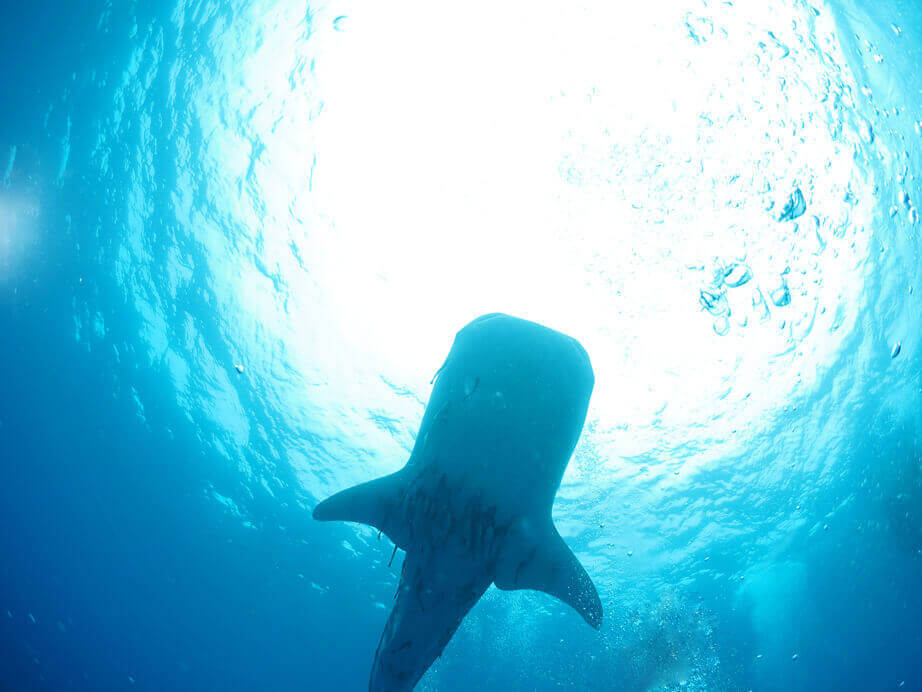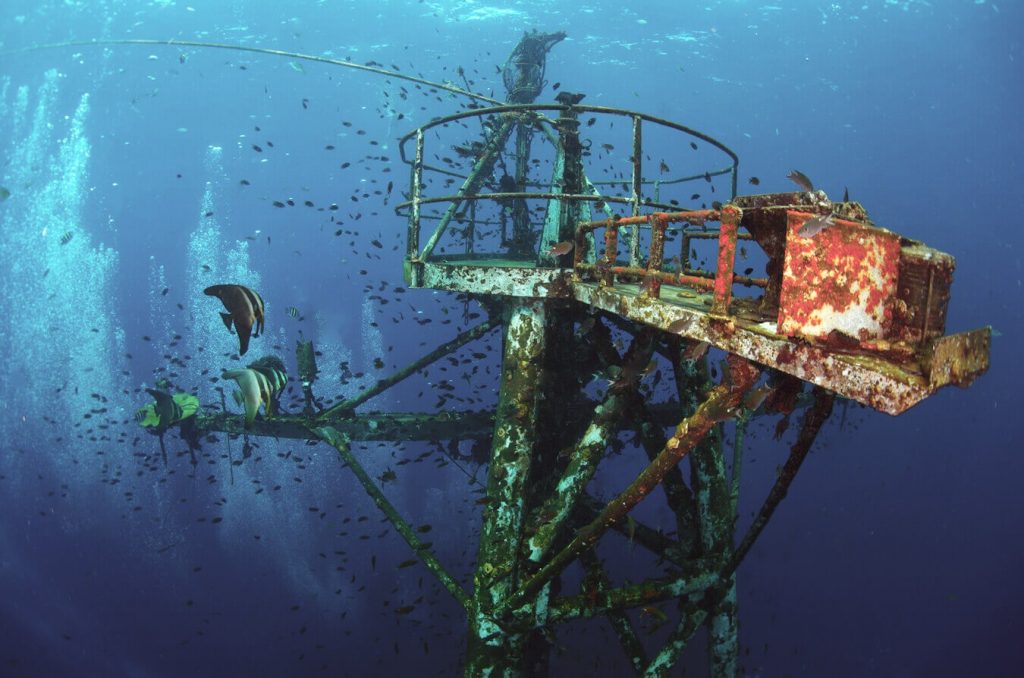Embark on an aquatic journey with our 2024 Complete Guide to Diving in Thailand. From the Andaman Sea to the Gulf of Thailand, discover the best dive sites, marine life, and tips for an unforgettable underwater exploration.
Complete Guide To Diving In Thailand 2024
Is Thailand Any good for scuba diving?
Thailand is an excellent destination for scuba diving, with a variety of dive sites spread throughout the country. The Similan Islands in the Andaman Sea offer crystal-clear waters and vibrant coral reefs, making it a popular spot for diving enthusiasts. Koh Tao, known as the “Turtle Island,” is a great destination for beginner divers, with a variety of dive sites, including shallow coral gardens and deeper shipwrecks. Koh Phi Phi, famous for its stunning limestone cliffs and turquoise waters, offers some of the best diving in Thailand, with a range of sites, including walls, caves, and pinnacles. Pattaya, located on the Gulf of Thailand, is a popular destination for both diving and snorkeling, with a range of sites including coral reefs, shipwrecks, and artificial reefs. The Surin Islands near the Myanmar border offer some of the best diving in Thailand, with crystal-clear waters and a variety of marine life, including manta rays, whale sharks, and barracudas. Additionally, Koh Chang is another popular dive location in the Gulf of Thailand that offers a range of dive sites suitable for divers of all levels. With its diverse range of dive sites and operators, Thailand is an unforgettable destination for scuba diving enthusiasts.

When's The Best Time to Dive in Thailand?
The best time for scuba diving in Thailand depends on the region you plan to dive in. Generally, the high season for diving in Thailand is from November to April when the weather is dry, and the sea conditions are calm. During this time, the water visibility is excellent, making it an ideal time for underwater photography and spotting a variety of marine life. The peak season for diving in Thailand is from December to February, with the most visitors and higher prices.
In the Andaman Sea, the best time to dive is from November to April when the sea conditions are the calmest, and the visibility is the clearest. This period coincides with the dry season on the west coast of Thailand. The Similan Islands, one of the most popular diving destinations in Thailand, are only open to divers from mid-October to mid-May.
On the Gulf of Thailand side, the best time to dive is from May to September when the weather is dry and sunny. Koh Tao, one of the most famous dive locations in Thailand, has excellent diving conditions throughout the year, but the best visibility is from March to May.
What is Thailand’s Best Dive Season?
Here’s a summary of the best time for scuba diving in Thailand, including all dive locations and their seasonal conditions:
The Similan Islands (Andaman Sea):
Open to divers from mid-October to mid-May; the best time to dive is from November to April when the sea conditions are the calmest, and the visibility is the clearest.
Koh Tao (Gulf of Thailand):
The best time to dive Koh Tao is from March to May. From May to September when the weather is dry and sunny.
Koh Phi Phi (Andaman Sea):
The best time to dive Koh Phi Phi is from November to April when the sea conditions are the calmest, and the visibility is the clearest.
Pattaya (Gulf of Thailand):
The best time to dive in Pattaya is from November to February when the water is clearest and the currents are mild.
The Surin Islands (Andaman Sea):
The best time to dive Surin Isles is from November to April when the sea conditions are the calmest, and the visibility is the clearest
Koh Chang (Gulf of Thailand):
The best time to dive Koh Chang is from May to September when the weather is dry and sunny.
Overall, the high season for diving in Thailand is from November to April, but the best time to dive varies by region. It’s important to check with local dive operators for up-to-date information on the best time to dive in your chosen location.
Thailand Diving Prices
How much does scuba diving cost in Thailand?
The cost of scuba diving in Thailand can vary depending on several factors such as the location, the dive operator, the type of dive, and the duration of the dive. Generally, the cost of a single fun dive in Thailand can range from 1,000 to 2,500 Thai Baht (approximately 30 to 80 USD) per dive.
For those who are new to scuba diving, there are various courses available, such as the Discover Scuba Diving course, Open Water Diver course, and Advanced Open Water Diver course. The cost of these courses can range from 12,000 to 25,000 Thai Baht (approximately 320 to 800 USD) depending on the location and the dive operator.
Some dive operators offer dive packages that include accommodation, meals, and transportation to and from the dive sites. These packages can cost from 15,000 to 50,000 Thai Baht (approximately 480 to 1600 USD) depending on the location, duration of the package, and the type of accommodation included.
It’s worth noting that the prices can vary widely depending on the operator and location, so it’s important to do your research and compare prices before booking a dive. Additionally, be sure to factor in any additional costs such as equipment rental and dive insurance as well as the cost of accommodation and food which is much higher on islands than other locations.
Is scuba diving cheap in Thailand?
When considering the cost of scuba diving in Thailand, it’s important to keep in mind that the total cost of a diving trip can be impacted by factors beyond the cost of diving itself. These external factors include travel expenses such as flights and transportation, accommodation, and food.
For example, if you are traveling from a location outside of Southeast Asia, the cost of airfare can be a significant expense. However, once you arrive in Thailand, local transportation costs are generally affordable, and it’s relatively easy to get around using public transportation.
Accommodation costs in Thailand can vary widely depending on the location, type of accommodation, and time of year. While basic guesthouses and hostels can be found for as little as 300 to 500 Thai Baht (approximately 10 to 16 USD) per night, more upscale hotels and resorts can cost hundreds of dollars per night.
Food costs in Thailand can be quite affordable, particularly if you eat at local street vendors and restaurants. Thai cuisine is famous for being delicious, and it’s easy to find a filling meal for as little as 50 to 100 Thai Baht (approximately 1.50 to 3 USD).
Overall, the cost of scuba diving in Thailand can be relatively affordable, but the total cost of a diving trip will depend on individual factors such as travel expenses, accommodation, and food. It’s important to factor in these costs when planning a trip to ensure that the total cost stays within budget.

Where is good for diving in Thailand?
Location: Similan Islands
Pros:
Crystal-clear waters with visibility up to 30 meters
Vibrant coral reefs with a diverse range of marine life, including manta rays, whale sharks, and turtles
A variety of dive sites, including deep and shallow options
Cons:
The park is closed to tourists from May to November
A liveaboard trip to the area can be expensive
Limited amenities on the islands
Location: Koh Tao
Pros:
Affordable prices for diving courses and certification
A range of dive sites, including shallow bays and deeper wrecks
An abundance of marine life, including turtles and whale sharks
Cons:
Crowded dive sites due to the island’s popularity
Occasional rough waters
Long additional Travel to options
Location: Koh Phi Phi
Pros:
Stunning underwater landscapes, including coral gardens, walls, and caverns
Diverse marine life, including leopard sharks, turtles, and colorful tropical fish
Beautiful natural surroundings on the island
Cons:
Crowded dive sites and boat traffic
Occasionally choppy waters
Limited accommodation options for different budgets
Location: Pattaya
Pros:
Most shipwrecks and artificial reefs in one location, attract diverse marine life
Proximity to Bangkok, Easy access convenient destination for east coast diving.
Opportunities for underwater photography due to the area’s unique dive sites
Cons:
Limited visibility parts of the year due to sediment-heavy waters
The best coral reefs a boat trip to far islands
Its a lively scene not for everyone
Location: Koh Lanta
Pros:
Unspoiled diving experiences with clear waters and diverse marine life, including whale sharks and manta rays
Secluded location with stunning coral reefs
Relaxed island atmosphere with fewer crowds
Cons:
Limited dive sites compared to other popular locations
Fewer amenities on the island compared to more developed areas
Limited transportation options to and from the island
Location: Koh Chang
Pros:
Unspoiled coral reefs and a variety of marine life, including seahorses and schools of barracuda
Fewer crowds compared to more popular diving locations
Opportunities for other outdoor activities, such as hiking and kayaking
Cons:
A limited number of dive centers compared to other islands
Less developed infrastructure compared to more popular areas
Fewer non-diving activities compared to more touristy islands
Each of these diving locations in Thailand offers unique experiences and attractions. The choice of location will depend on individual preferences, skill level, and travel plans.
Where is the best place to dive in Thailand?
Thailand is home to several fantastic diving destinations, each offering unique experiences and catering to different diving preferences. Here are four locations to consider:
Similan Islands
– Best for experienced divers and underwater photographers
The Similan Islands, located in the Andaman Sea, are a world-renowned diving destination with crystal-clear waters, diverse marine life, and stunning coral reefs. It’s only accessible by liveaboard boats, making it ideal for experienced divers and underwater photographers looking for a remote diving experience.
Koh Lanta – Best for nature lovers and advanced divers
Koh Lanta is a less touristy island located in the Andaman Sea and is known for its clear waters, diverse marine life, and unspoiled diving experiences. It’s an ideal destination for advanced divers and nature lovers who want to escape the crowds of more touristy areas.
Pattaya – Best for ease of access and dive training
Pattaya is a coastal city located near Bangkok and is the easiest diving destination to access from the capital. It’s known for its calm waters and excellent training conditions, making it ideal for beginners and those looking to advance their diving skills. Pattaya is home to several shipwrecks, making it a popular destination for those interested in wreck diving.

Learn to Dive In Thailand
Can I get scuba-certified in Thailand?
Yes, it is possible to get scuba certified in Thailand. The country is a popular destination for scuba diving training and certification due to its warm waters, stunning diving locations, and affordable prices. Many PADI diving schools and organizations throughout Thailand offer a range of courses for beginners to advanced divers. The most common certification agencies in Thailand are PADI (Professional Association of Diving Instructors) and SSI (Scuba Schools International). The course usually takes 3 days and is priced based on the level of certification and location. Scuba certification in Thailand is generally more affordable than in other parts of the world, making it a popular destination for those looking to get certified.
How much does it cost for PADI?
The cost of PADI (Professional Association of Diving Instructors) certification in Thailand varies depending on the level of certification, location, and diving school.
For example, the cost of PADI Open Water Diver certification in Thailand ranges from 12,000 to 20,000 Thai Baht (approximately $280 to $625 USD), depending on the location and the diving school. The cost of Advanced Open Water Diver certification ranges from 12,000 to 18,000 Thai Baht (approximately $265 to $470 USD).
It’s important to note that these are just rough estimates, and the actual cost may vary depending on the diving school and location. Additionally, there may be additional fees for equipment rental, study materials, and certification processing.
It’s always best to research and compare the prices of different diving schools before choosing one. Make sure to also consider the quality of training, instructor experience, and safety standards when selecting a school.
Why are some dive schools in Thailand cheaper than others?
The cost of scuba diving certification in Thailand varies from one diving school to another. Some diving schools are cheaper than others due to several factors, including location, use of boat (or not) competition, and the level of services and facilities they offer.
Diving schools located in popular tourist destinations such as Koh Tao, Krabi, and Phuket may dive from the beach for cheaper prices or share boats as well as have more competition, which drives down the prices. Additionally, These areas cost significantly more in terms of accommodation and food and drink so often the savings are not quite as even overall.
On the other hand, more expensive diving schools may have better equipment, more experienced instructors, and more comprehensive courses, which can justify the higher cost. These schools may also offer more personalized instruction, smaller class sizes, and a better overall learning experience.
When choosing a diving school, it’s important to consider both the cost and the quality of instruction. Cheaper is not always better, especially if it comes at the expense of safety or the quality of the training. It’s always best to research and compare different diving schools before making a decision.
How long does it take to get scuba-certified in Thailand?
the PADI Open Water Diver certification typically takes around 3 to 4 days, which includes both academic reviews after e-learning and pool sessions, as well as open water dives.
Recommended Diver Certifications
What Diver Certification Level is recommended for Scuba diving in Thailand?
Thailand scuba diving offers a dive experience for all levels of scuba divers, however, We recommend having or taking your Advanced Open Water Course so you have access to all the dive sites on offer since Thailand has many fantastic Wreck dives which are Advanced level only.

Wreck Diving In Thailand
Thailand stands as a premier destination for wreck diving enthusiasts, boasting an array of captivating sites that make it a global wreck diving hub. Pattaya, recognized as the wreck diving capital, is a treasure trove of sunken vessels, offering diverse underwater ecosystems and marine life. Koh Chang, home to Southeast Asia’s largest wreck, the HTMS Chang, further solidifies Thailand’s reputation. This massive naval vessel creates an awe-inspiring underwater playground for divers. With a unique blend of historical wrecks and vibrant marine ecosystems, Thailand’s wreck diving experience is unparalleled, attracting divers worldwide to explore its rich maritime heritage beneath the waves.
top 5 tips for scuba diving in Thailand!
Choose the right time to dive: Thailand has two diving seasons – the high season (November to April) and the low season (May to October). The high season is generally considered the best time to dive as the visibility is better, and the water temperature is warmer. However, it is also the busiest time, so you’ll need to book your dive spots in advance. During the low season, the visibility can be reduced, and the water can be cooler, but you’ll find fewer crowds and cheaper prices.
Pick the right dive Location: Thailand has many dive sites, and each one offers a unique experience. Some of the popular dive sites are Similan Islands and Koh Tao some are very fast easy and affordable like Pattaya and Koh Chang. Depending on your level of experience and what you want to see, you should research and choose a dive site that suits you best.
Choose a reputable dive operator: When choosing a dive operator, make sure to do your research and choose a reputable 5-star PADI Dive Center. Check reviews online, ask for recommendations from other divers, and make sure they follow safety protocols. It’s essential to feel comfortable with your dive operator as they will be responsible for your safety.
Take care of the environment: Thailand’s underwater world is beautiful, and it’s important to preserve it. As a diver, make sure to follow the “Leave No Trace” principle and avoid touching or disturbing marine life. Don’t take anything with you except photos, and dispose of any trash properly.
Be prepared for the weather: Thailand’s weather can be unpredictable, so it’s important to be prepared. Bring appropriate clothing, sunscreen, and insect repellent. Also, keep an eye on the weather forecast and be prepared for any sudden changes.














